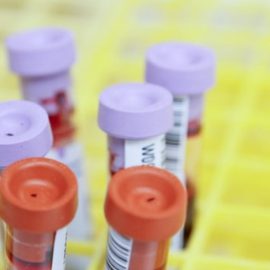

This article is an excerpt from the Shortform book guide to "Come As You Are" by Emily Nagoski. Shortform has the world's best summaries and analyses of books you should be reading.
Like this article? Sign up for a free trial here .
Why do women have such difficulty having an orgasm? Is the problem anatomical or psychological in its nature?
Research shows that men are almost 30% more likely to orgasm than women. According to sex researcher Emily Nagoski, women’s difficulty reaching an orgasm stems from the overactivation of the sexual inhibition system (SIS) due to negative emotions such as stress and shame.
Here is why women have difficulty having an orgasm and what they can do to have better and more frequent orgasms.
Women’s Difficulty With Orgasm
According to Emily Nagoski, difficulty having an orgasm is one of the most common reasons women seek sex-related treatment or therapy.
But why is it that so many women seem to have these difficulties? Nagoski says the answer is most often the same as what causes lack of desire and non-concordance: over-activation of the SIS due to stress, depression, anxiety, or shame. For example, if you’re feeling self-conscious about your body during sex, that activates the SIS, making it difficult for you to reach orgasm.
However, in more specific terms, Nagoski says that orgasm difficulties arise from the way our brains process the gap between our expectations and reality, which our culture’s tendency to set the bar unreasonably high worsens.
Nagoski explains that our brains constantly evaluate our surroundings, making comparisons between the expectations we’ve developed based on our experiences and what’s actually happening. When our expectations don’t match up with reality, we try to close the gap by setting a goal to bring them back into alignment. Nagoski adds that when we think we’re making good progress toward that goal, we remain happy and motivated. But when we don’t see good progress, we become frustrated and increasingly desperate to close the gap, until we eventually give up in despair.
In the case of orgasms, the process Nagoski describes looks like this: Society has given you the expectation that you should be able to have an orgasm from vaginal penetration, but you find yourself unable to do so. Your brain notices this gap between your expectation and reality, and so you become determined to “fix” reality by continuing to try to have an orgasm this way. When it doesn’t work, you become increasingly anxious, which activates the SIS. Ultimately, this makes trying to have an orgasm even more difficult than before, creating a continuous cycle of frustration and anxiety that eventually ends with you giving up on having one altogether.
(Shortform note: Another important factor contributing to women’s difficulty having an orgasm is the lack of knowledge they have about the clitoris. One study, for example, found that the less knowledge a woman has about her clitoris, the less frequently she’s able to orgasm during masturbation. Interestingly, however, the research showed that a woman’s level of knowledge of the clitoris had no significant effect on the frequency of orgasm during partner sex—in other words, even if a woman is knowledgeable, the frequency with which she orgasms with her partner is no more than incidental. The researchers attributed these findings to a societal construction of sex that privileges men’s pleasure over women’s.)
How to Have Better (and More) Orgasms
Despite the difficulty that many women seem to have with orgasms, Nagoski assures us that there’s hope for women to not only reach orgasm but also improve and have more of them. She says the solution is to deactivate the SIS and slowly activate the SES. In other words, we need to eliminate what our brain sees as reasons not to have sex and gradually increase the frequency and intensity of what turns us on.
To create an environment where this is possible, Nagoski insists we must get all of the internal states of our mesolimbic cortex—things like comfort, hunger, and sleepiness—to work together rather than against each other. What this means is that we need to be fully present in the moment, without any of our various internal states trying to pull us away from the goal at hand (the goal being having an orgasm). For example, even if you’re in the comfort of your own bed and relatively energized, you’ll find it difficult to focus on having an orgasm if you haven’t eaten in 8 hours.

———End of Preview———
Like what you just read? Read the rest of the world's best book summary and analysis of Emily Nagoski's "Come As You Are" at Shortform .
Here's what you'll find in our full Come As You Are summary :
- Why women should change the way they talk, think, and feel about their sexuality
- A look at the misinformation and harmful cultural messaging surrounding sex
- A discussion around the individual experiences of arousal, desire, and orgasm






